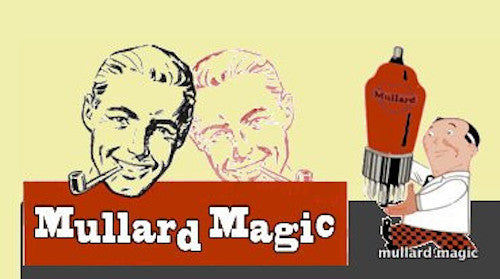
ERICSSON
Share

In the early days of radio broadcasting in the 1920s, many listeners were pioneers who built their own sets. For those who preferred to buy ready-made products, however, there were soon complete radio sets in the stores.
The first-generation products were tube sets that required headsets for listening. The first radio receiver produced by Svenska Radioaktiebolag (SRA) in 1922 was a two-tube model. Over the following years, the standard of radio receivers improved, and they were sold under the Radiola brand.
In 1927, Ericsson became the majority owner of SRA with Marconi as a minority owner. SRA was also responsible for sales in Scandinavia under its own name, while Ericsson sold the company's radios in the rest of the world.
Sales remained at a relatively low level as headset limited listening to one person at a time. The next step was to include a loudspeaker in the radio. The first Radiola with a built-in loudspeaker was launched in 1928. This product was an immediate hit, and from this point on, radio was a tremendous success. Up until 1932, more than 150,000 Radiola receivers were produced, which is quite a respectable figure, considering that each one cost between SEK 3,000 and 6,000 in today's money. This was a considerable sum at a time when people had much less money to spend than they do today.
If technical improvements were prioritized in the 1920s, the following decade focused on design. During the 1930s, furniture design in the style that was called Swedish modern reached its peak. This style was also evident in the design of the Radiola products. SRA enlisted respected designers and in 1939 presented a new generation of radio sets that were functionally designed, easy to use and featured classically simple wooden cabinets.
The first portable Radiola was also introduced in 1939. This was the year during which World War II started, however, and travel during the war years was limited. The portable radio therefore did not achieve success until after the war in 1946 when people felt a need to travel. Being able to take a radio on the train or out to the country became an important part of a new mobile life style.
The transition from 78 rpm shellac discs to long play records made of vinyl was the next step in the development of Radiola products. In the 1950s, a radio gramophone became a living room fixture, at least in middle class homes. SRA manufactured models in various sizes, from small table units to large floor models. These latter products were designed as furniture, making them a central feature in homes of the 1950s.
The invention of the transistor and development of semiconductors during the 1950s meant a radical change in technology in the radio industry. Vacuum tubes could be eliminated, and when mass production of transistors began, radios could be made both smaller and less expensive. The first transistor radio in the Radiola series was launched in 1958.
Four years earlier, in 1954, SRA had introduced its first TV set. Experimental broadcasts had been in progress since the 1920s in Great Britain, and SRA has conducted test broadcasts in Stockholm as early as 1935. Only after World War II did TV broadcasts become more than a curiosity, however, with commercial broadcasts starting in the US first and in Europe a few years later.
When regular TV broadcasts started in Sweden in 1956, SRA had three Radiola sets on the market, two with 17-inch picture tubes and one with a 21-inch screen. Compared to today's standards, the picture was small, while the TV set itself was large and clumsy.
Size was a factor that motivated SRA to devote considerable effort to design, as the company had done with radio sets in the 1930s. Once again, a simple design was chosen which was dominated by the type of wood from which the cabinet was made. Radiola's design was to set the trend in Scandinavia. Such features as a sliding cover that could be pulled down over the screen when it was not in use, thus making the TV set look more like a piece of furniture, were retained well into the 1970s.
In the late 1950s and the early 1960s, TV sets accounted for the dominant share of SRA's production. At the peak, more than 1,000 TV sets were manufactured each week.
In the early 1960s, however, there was a growing awareness at SRA that the company should focus on communications radio. Manufacturing radios and TVs was increasingly seen as an anomaly. Ericsson, which was the principal owner, had established a strategy that focused on telephony and communications. In 1964, radio and TV production was therefore sold to AGA, which also acquired the Radiola brand.
